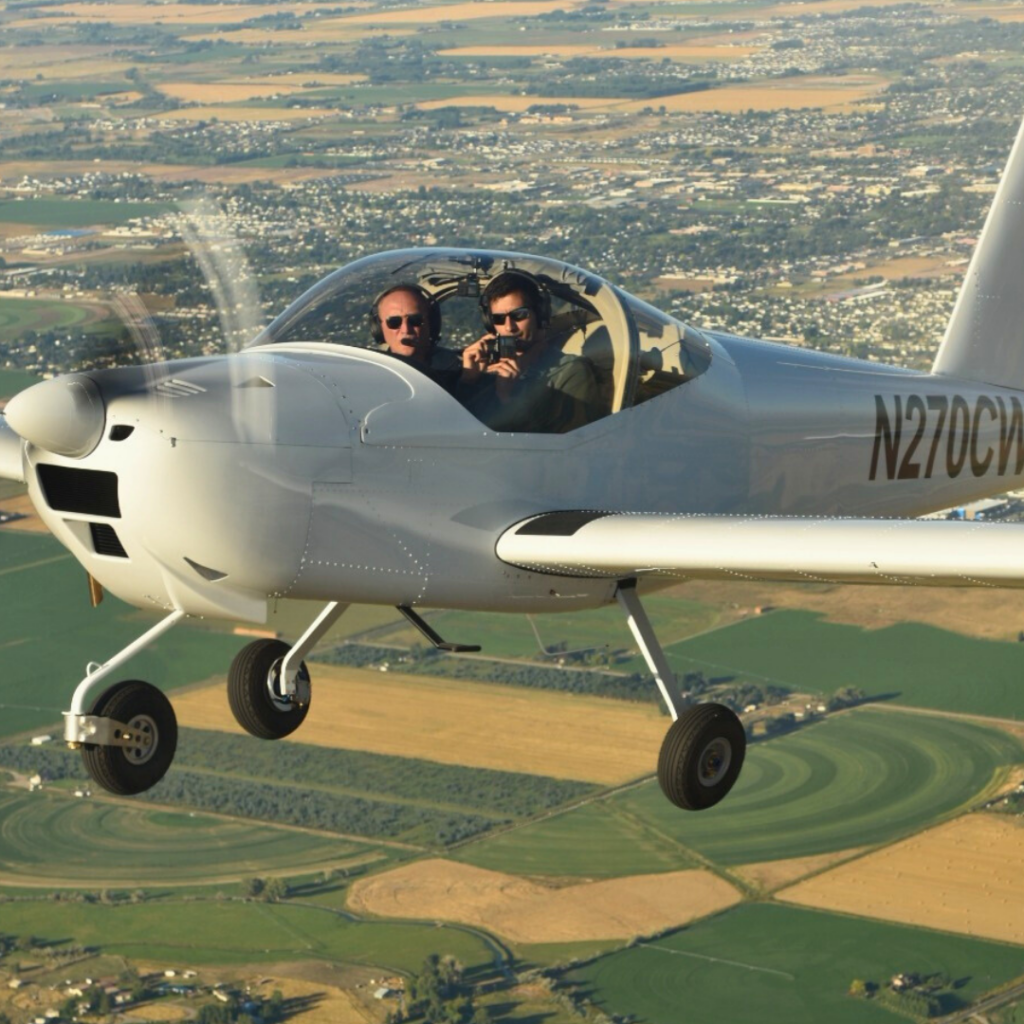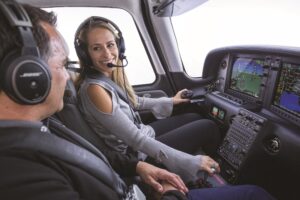How Do I Become a Professional Pilot?

What does the pathway to the airline flight deck look like for someone who has no experience or flight time? This is one of the most frequently asked questions from aspiring pilots. While specific routes vary, there is a basic series of steps needed to get an airline job. Let us walk you through this one by one and identify some of the key decisions you’ll face along the way.
Step 1: Begin Your Flight Training
It’s time to put your flying dreams into action. The first step to becoming a professional pilot is flight training.
- Age Requirements for Pilot Certificates
While you can begin flight training at any age, there are specific ages required for initial certifications. To obtain a Student Pilot Certificate, you will need to be 16 years old. This requirement permits you to fly an aircraft solo (without an instructor on board), which is a necessary phase of flight training.
A Private Pilot Certificate is typically the initial certificate earned by a pilot and requires you to be 17 years old. To get this, one must learn the fundamentals of flying and navigating an aircraft.
- Other Prerequisites for Flight Training
Apart from age, you must also be fluent in English (both reading and writing) to begin flight training. Additionally, it is necessary to obtain a Federal Aviation Administration (FAA) medical certificate.
Medical certificates come in different types (or classes), each class with its own requirements and privileges. If you plan to be a professional pilot, it is best to obtain a First Class Medical Certificate early on, as this is a requirement for airlines.
- Choosing Where to Enroll for Flight Training
The biggest decision before your flight training is selecting the type of aviation school you want to attend. You have the option to enroll in colleges and universities that offer aviation degrees, which include flight training. Alternatively, you can choose to attend a flight school that is not associated with an aviation university, which can offer a faster route to the airlines.
If you decide against a college program, the next decision will be to choose between learning at a local flight school or an academy-style school. These flight academies offer accelerated flight training that can help you get to the airlines faster. Moreover, these programs specialize in helping career-minded students progress quickly by providing them with an immersive training experience in an environment that has few distractions.
Step 2: Earn Your Private Pilot Certificate
A Private Pilot Certificate is typically the first certification you’ll get on your flight journey. It serves as a foundation for all future ratings and certificates.
- Master the Fundamentals of Flying
While training to be a private pilot, you will learn all the fundamentals of flying and navigating an aircraft. You will also learn how to communicate with other pilots and air traffic controllers. You can depend on your flight instructor to help you meet all the specific requirements in flight and ground training to become a private pilot.
- Take Your Certification Exams
To earn the certificate, you need to take two tests: a written exam (which is multiple-choice) and a practical exam. The practical exam is taken with an examiner and can be thought of as a driving test for airplanes. It consists of both an oral portion (where the examiner will ask you questions) and a flight portion (where you will demonstrate the maneuvers that you have learned in your training).
Upon passing these exams, you will gain your Private Pilot Certificate. With this certificate, you are authorized to pilot a small aircraft in weather conditions that permit you to fly visually by looking outside. You can also carry passengers, but you cannot fly them for compensation or hire.
Step 3: Earn Your Instrument Rating
Now that you are a private pilot, the next step to pursuing an airline career is getting an instrument rating. The instrument rating allows you to fly an aircraft without relying on any visual references outside the cockpit.
- Why Obtain an Instrument Rating
Obtaining an instrument rating is also essential for airline pilots. With this ability, you will be able to navigate an aircraft even in difficult weather conditions, such as when clouds completely obscure your view of the ground. After all, airliners don’t just fly on sunny days!
- The Instrument Flight Training Experience
Students often describe instrument flight training as both challenging and fun. There is something truly awe-inspiring about the ability to fly an airplane for hundreds of miles in the clouds and precisely land at the intended destination.
- Requirements for the Instrument Rating
Similar to the Private Pilot Certificate, obtaining an instrument rating involves meeting a number of specific training requirements. Again, your instructor will help you navigate your progress and hone the skills you will need to pass both the written and practical examinations. After passing the exam, you will officially hold an instrument rating.
Step 4: Earn Your Commercial Pilot Certificate
After getting your instrument rating, the next step toward your airline career is obtaining your commercial pilot certificate. This license allows you to make money while flying an airplane.
- The Key to Commercial Aviation
One of the major requirements for the commercial pilot certificate is accumulating 250 total hours of flight time. You also need to learn a series of advanced flight maneuvers that will improve your skills as an aviator.
- Ace Your Commercial Pilot Exam
Preparing for your written and practical commercial pilot exams involves delving deeply into aviation studies. Apart from mastering the art of flying an airplane, you must also learn advanced aviation topics like complex aircraft systems, as well as commercial flight operations and regulations.
- The Next Step After the Commercial Certificate
You might be wondering if earning a commercial pilot certificate is the final step to becoming an airline pilot. In the United States, the answer is no.
While getting a commercial certificate is an impressive accomplishment, it requires a minimum of 250 hours of flight time. The flight hour requirement for an airline pilot (or a pilot for a major cargo carrier) is significantly higher, at least 1,500 hours. Looking at these numbers, you will note that a significant amount of flight hours are necessary after getting a commercial certificate to reach the flight deck of an airliner. This brings us to the final step: time building.
Step 5: Time Building and Additional Ratings
To get the 1,500 flight hours required by an airline, you will need to find a way to build your flight time. Time building can be done through initial flying jobs or acquiring strategic ratings.
- Earn Flight Hours Through Aviation Jobs
There are a variety of opportunities for commercial pilots with relatively fewer flight hours. You could get a job patrolling oil pipelines, towing banners, or taking skydivers up to jump.
- Opt to Be a Flight Instructor
However, the most common way to build flight hours is to earn a Flight Instructor Certificate and teach others how to fly. Becoming an aviation lets you build flight hours. Plus, it’s a vital role that looks good on an airline application.
- Obtain Strategic Additional Ratings
As you prepare for your airline career, consider obtaining a Multi-Engine Rating. This rating will allow you to pilot an aircraft with more than one engine—a necessity for flying an airliner. Once you have earned this rating and accumulated 1,500 flight hours, you will be ready to begin applying for airline jobs.
Take Your Step Towards Your Aviation Journey
While the road to the airline flight deck can seem challenging, remember that it is also immensely rewarding. By following these five steps with focus and choosing an accelerated pilot program, your dream of flying for the airlines can happen in as little as two years. So, start taking the steps toward your pilot dreams today.

